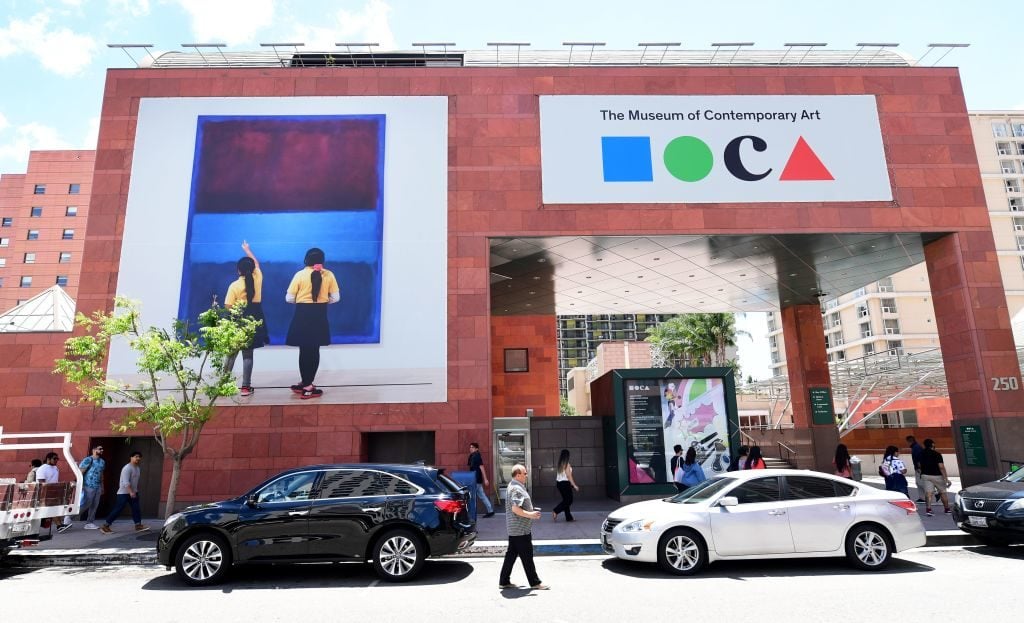Art World
The Museum of Contemporary Art in Los Angeles Has Laid Off More Than Half Its Staff Amid an Indefinite Closure
MOCA says it hopes to reinstate its part-time employees once the museum reopens.

MOCA says it hopes to reinstate its part-time employees once the museum reopens.

Eileen Kinsella

The Museum of Contemporary Art in Los Angeles, which has struggled for years with budgetary and operational issues, has laid off all 97 of its part-time employees as the museum remains closed for the foreseeable future amid the intensifying global health crisis sparked by the coronavirus outbreak.
These positions include gallery attendants, exhibition installers, retail and educational staff, and audiovisual crew. The cuts were made in part so that workers could file for unemployment benefits and cash out accrued vacation pay, the museum said. Prior to the layoffs, the total staff was roughly 185, meaning the cuts represent over 50 percent of the staff.
“We are all facing extremely difficult circumstances created by COVID-19,” according to a statement issued by the museum. “The desire to support community health and well-being in accordance with government mandates requires MOCA to take significant measures in order to protect the public and the future of the institution.”
The museum said the layoffs are temporary and that it hopes all employees are able to return to work when the museum reopens. All of the positions that have been terminated require staff to work in the museum during public hours, and cannot be performed remotely, the museum said. The employees will be paid through the end of the month.
“We are continuing to work closely with MOCA’s union labor partner during these difficult times,” the institution said in a statement.
This past December, the museum and the American Federation of State, County, and Municipal Employees (AFSCME) reached an agreement to proceed with voluntary recognition of an AFSCME union at MOCA, based on a majority of signed union cards. This was done without requiring staff members to vote in a formal election, as is typically the case.
“In this circumstance both the workers and MOCA are shell shocked. Nobody was expecting to be in this position, and the workers are obviously disappointed,” said Igor Kagan, a business representative with the union and chief negotiator for the employees. (Not all of the employees who lost their jobs are represented by the union.)
“But I think particularly among the bargaining team and those active in organizing, the feeling is that at the very least, we have a seat at the table—the virtual table—and have a say in what’s happening. In this case, we’re hoping to soften the economic blow,” he added.
“Obviously there are a lot of museum workers who are interested in unionizing,” said Lylwyn Esangga, an AFSCME organizing director, noting that unionized staffers have more leverage when negotiating with their employers.
The Geffen Contemporary at MOCA, one of the museum’s locations, will remain closed to the public through the summer, and galleries on Grand Avenue will reopen when applicable law and logistics permit. Meanwhile, the opening of a major survey of Swiss artist Pipilotti Rist was pushed from mid-May to September.
MOCA said it will continue to evaluate its programmatic schedule and staffing needs as the situation evolves.
“These are unprecedented times and we recognize the painful effect of these measures,” the museum said.